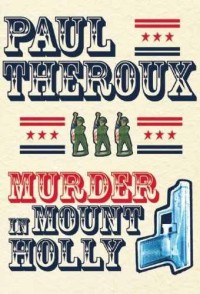Too Much Stuff by Don Bruns
 Sunday, December 4, 2011 at 8:08PM
Sunday, December 4, 2011 at 8:08PM 
Published by Oceanview on December 12, 2011
James and Skip, the two lads who founded More or Less Investigations, are hired to find a ton of gold that went missing in the Florida Keys during a hurricane in 1935. James and Skip are about as well equipped to handle investigations as Wayne and Garth (in fact, they often reminded me of Wayne and Garth), but the promise of earning a small fortune if they find the gold, not to mention the inducement of $1,000 in expense money, sends them on their way. The task will not prove easy; another pair of investigators, hired six month earlier, has disappeared. Of course, in their effort to find the buried treasure the young men uncover something far more sinister and find themselves surrounded by danger.
Too Much Stuff is a fun novel, more a comedy than a mystery/thriller. The mood is light, the characters amuse themselves with entertaining banter, and the plot has just enough goofiness to offset the traditional trappings of a PI story. This is a quick and easy read, a nice respite from thrillers that take their tough guy heroes too seriously.
James and Skip would never be described as tough; they're easy-going guys who don't carry guns or litter the landscape with corpses. In James and Skip, Don Bruns has created a pair of engaging characters: James has a way with the ladies while Skip can't believe he's lucky enough to have a girlfriend. James has a head full of movie trivia and frequently quotes his favorite lines of movie dialog while Skip tries to guess the source. Yes, that's been done before, but even if the use of film trivia is unoriginal, it adds to the novel's entertainment value.
Bruns writes in a breezy style that's well suited to the novel's subject matter. He creates a strong sense of place in the book's Florida Keys setting. A plot twist near the story's conclusion is a bit obvious -- it's hard to believe James and Skip couldn't figure out what was happening -- and the action-filled ending is wildly improbable, but it doesn't detract from the novel as a whole, provided you're willing to trade amusement for credibility.
RECOMMENDED
 TChris |
TChris |  Post a Comment |
Post a Comment |  Don Bruns,
Don Bruns,  Recent Release,
Recent Release,  mystery in
mystery in  Thriller
Thriller 


